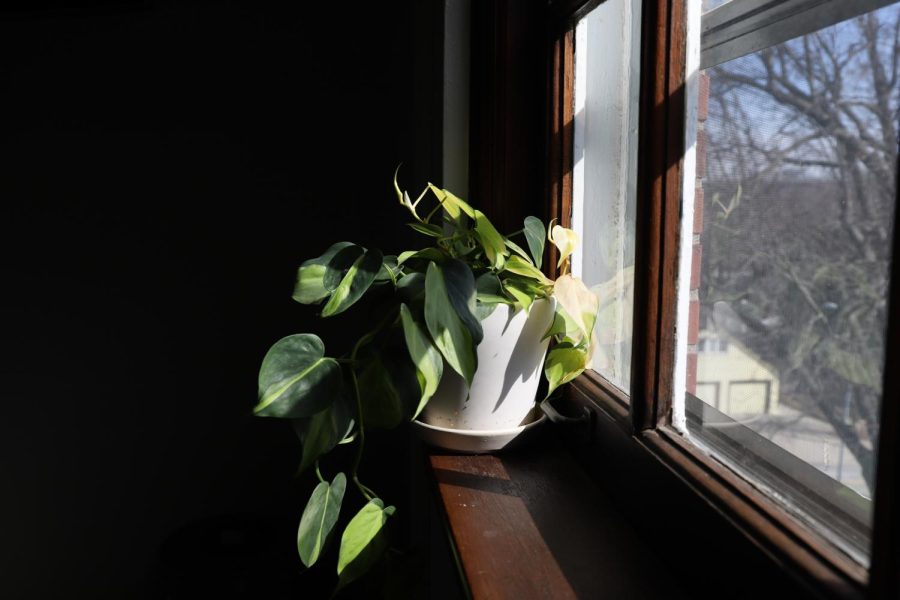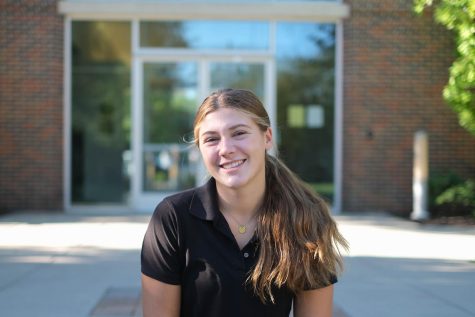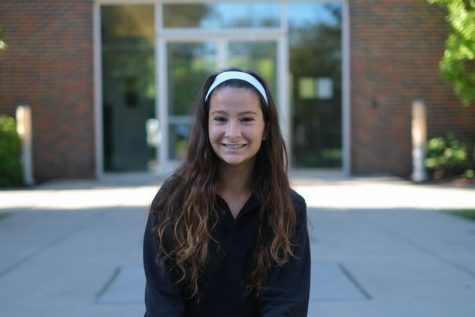Going Back to Green
While STA has made efforts to be more environmentally friendly over the years, COVID-19 interrupted many important programs at the school that never returned to campus.
The sun shines on a plant on a window ledge Feb. 28. Plants are helpful to many households because they can filter the air in any room. photo by Kaylee Lary
March 10, 2022
As junior Tessa Stevenson walks into the cafeteria for lunch, she braces herself to see the waste STA generates on a daily basis. She knows that the hundreds of styrofoam plates, plastic forks and paper napkins that are used by students every day all end up in landfills, where they’ll contribute vast amounts of methane to our atmosphere. After acknowledging this reality, it becomes painfully obvious how big our community’s impact is on the environment, and how little we’re doing to help.
According to most teachers and students at STA, the greatest threat the environment currently faces is global warming.
The current concentration of carbon dioxide in our atmosphere, as of July 2021, is the highest it’s ever been in human history. As this concentration climbs higher, as it’s predicted to, the warming of our atmosphere will continue to grow hotter and hotter, and its disastrous effects worse and worse (National Geographic).
In previous years, STA students have supported environmental initiatives within the school as well as around our community. However, many of these initiatives simply don’t exist at the school anymore. Senior Madi Reese recalls some of the initiatives that STA’s “Green Team,” an old extracurricular, supported during the school year in 2019.
“[The Green Team] had more rallies and protests. It wasn’t at school, but they took people to protests,” Reese said. “They had implemented things like recycling trash and composting in the lunchroom, but they don’t do that anymore.”
One proponent that multiple students believe ended green initiatives at the school is COVID-19. With the outbreak of the virus disturbing the school year, it also disrupted numerous programs at the school. As in-person learning continued, many green initiative programs did not make a return to campus with the rest of the community. With the complications of COVID-19 risks taking the main focus of attention, the environment simply wasn’t as big of a priority as before.
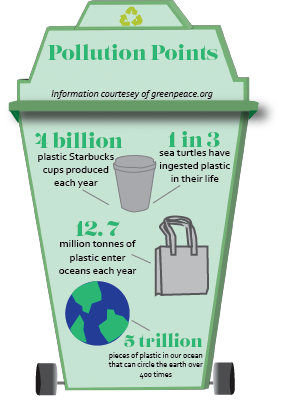
Biology teacher Sarah Stranz believes STA’s action towards being environmentally conscious has stayed somewhat in place throughout the past years with COVID-19.
“I don’t know if I would call it a decline, but more so, a stand still.” Stranz said.
Stevenson believes the shift from environmental to virus awareness during the first months back on campus was more wasteful than necessary.
“I feel like with COVID-19 going on it was like almost an excuse that we need to focus on masking up, and sanitation is important but there are definitely better ways to do it,” she said.
Along with disposable face masks, plastic barriers, food containers and gloves were all also common in STA classrooms during the 2021-2021 school year.
AP Environmental Science teacher Sarah Holmes volunteers at the Missouri Environmental Education Association (MEEA), and believes that one of their programs could be perfect for STA to get back on track sustainability-wise.
“One of the things that they do is this program called Missouri Green Schools and it’s a program that recognizes and celebrates environmental sustainability,” Holmes said.
To become labeled a green-ribbon school, STA would need to achieve: reduced environmental impacts and costs; improved health and wellness of schools, students and staff; and effective environmental and sustainability education.
Stranz believes the educational aspect of the program would be the most important tactic to changing climate issues.
“Every action starts with education,” Stranz said. “You first have to be aware, informed, and trained. It must be put into practice and then it becomes automatic.”
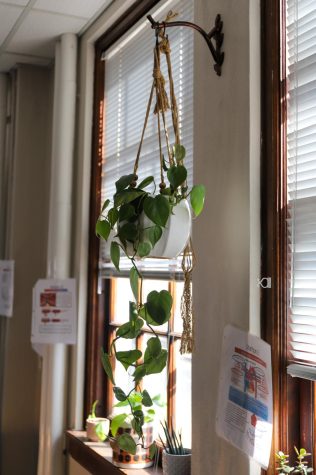
are over 300,000 identified plant species in the world.
After being informed on environmental issues, making conscientious changes is equally as important as the education itself. When considering personal actions one can take to reduce their negative impact on the environment, science teacher Vickie Albritton encourages students to rethink their daily impact on the environment.
“Notice your habits,” Abritton said. “What do you put into the trash? Are you able to reuse things? Are you able to reduce the amount of containers that you bring home?”
Holmes also stresses to students how important their individual choice of consumerism is.
“Do the small things and begin to be aware of how you use your energy, where you put your money,” Holmes said. “Everything you put in your mouth is a vote; it’s an action that you are doing that is impacting whether this company gets money or that company gets money.”
Through her capstone research on climate change, Reese has found the vast majority of humans’ carbon emissions comes from mass-producing companies.
“You yourself probably aren’t making that many emissions but these giant companies are,” Reese said. “That’s why it’s so important to send a message to them, whether it’s directly, or through policy-makers, or just not supporting them.”
Holmes thinks that it would be a positive shift in culture if consumers learned that they don’t need to buy something just because others have it.
“I think that is a huge problem because it’s like ‘Oh I want this here because someone else has it,’ Holmes said. “I mean you get into that shopping groove and you’re getting things you don’t need.”
Many students aim to be more sustainable in their consumerism through supporting sustainable brands. Reese uses products from many of these brands, but one clothing brand in particular stands out for her.
“Patagonia is my favorite brand ever,” Reese said. “Not only are they sustainable, but they’re eco-conscious. It’s cute. It’s also ethical. And I just bought some shorts from there yesterday that are all 100% made of recycled fishing nets.”
Both students and teachers at STA have powerful motivators to keep working for a cleaner planet. Senior Ellie Bolch, a former member of Green Team, considers the impact climate change will have on others who don’t have as much power to enact change.
“We’re fortunate that we do have shelter, and if you think about people who are less fortunate, that are living outside, this is affecting them more than us,” Bolch said. “And if it’s not for them, we should want it [a healthy environment] to be there for our children and future generations.”
Stevenson is moved to care for the Earth when she sees the reality of climate change, such as dying animals and poor air quality. She believes that everyone should care for the Earth, because what affects one part of it affects the rest of us.
“It feels good to be a human who understands that we are all connected and if Earth fails then we are failing,” Stevenson said. “I think others should care because this is our Earth, like it is ours, it’s not just one country’s, one person’s.”
Although eco-conscious minds are typical at STA, collective action still appears to be missing. Holmes believes the key to making big changes at the school begins by assembling those who care the most about these issues.
“There are so many faucets to it, but I think the first thing you do is get a group of people together that are passionate and interested and take a look and see where we are,” Holmes said.
According to Holmes, showing students the power they have to change our world is integral to a STA education. Empowering young women now will prepare the next generation of environmental activists, engineers, scientists, and business leaders.
“If there is one thing that I believe wholeheartedly, it is that I want students to understand that they can make a change in their school, so that when they leave they can make a change in the world.”



